Since the arrival of Carlo Ancelotti last December, Everton have been performing exceptionally well. They secured five wins in their last ten matches across all competitions; only lost to the likes of Manchester City, Liverpool, and Arsenal. In the Premier League, the Toffees are making good progress. Before Don Carlo came to Goodison Park, they were only four points above the relegation zone. Credit to the Italian, Everton now are only seven points below Chelsea, who are in the fourth Champions League spot.
Manchester United have also been in good form. In their last seven matches in all competitions, the Red Devils went undefeated and won five games total. Due to their positive results, expectations were high coming to this match. Fortunately, the match went out as dramatic as expected. Without further ado, this tactical analysis will inform you how the match unfolded.
Lineups
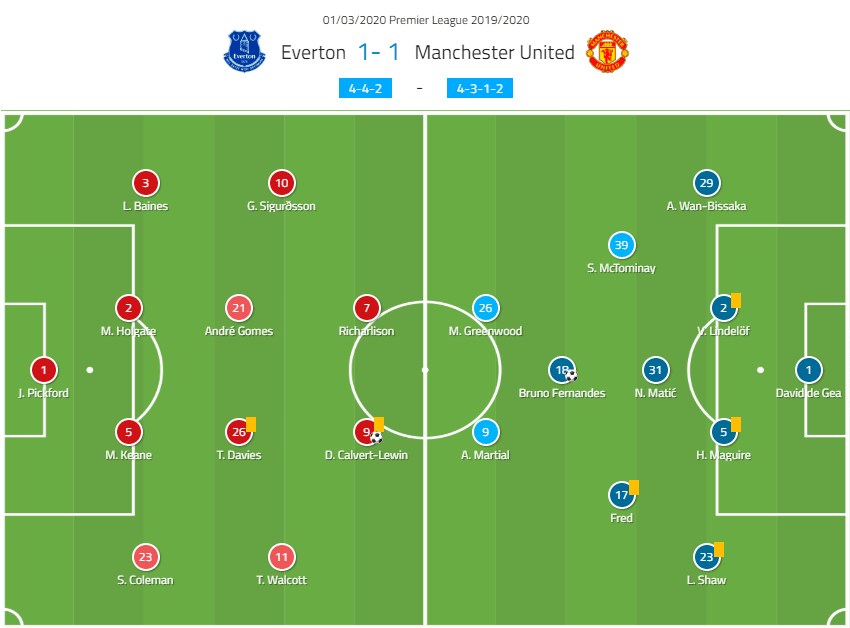
Ancelotti opted his regular 4–4–2 for Everton. The duo of Michael Keane and Mason Holgate started as the centre-back pairing in front of Jordan Pickford. In the engine room, Tom Davies and André Gomes served as the double pivot for the home side. Upfront, Dominic Calvert-Lewin and Richarlison spearheaded Everton’s attack. The dugout was filled with names like Djibril Sidibé, Bernard, and Moise Kean.
Oppositely, Ole Gunnar Solskjær chose 4–3–1–2; which can also be seen as 4–4–2 diamond. Nemanja Matić started as the lone defensive midfielder, supported by Scott McTominay and Fred alongside him. New recruit Bruno Fernandes started at the tip of the diamond; providing support for Mason Greenwood and Anthony Martial up top. Names like Juan Mata, Odion Ighalo, and Brandon Williams were among the substitutes.
Everton’s defensive tactics (part one)
Credit to David de Gea’s disastrous mistake, United were forced to chase the game since the early minutes. Offensively, Solskjær set his team in 4–1–2–1–2 or 4–4–2 diamond. The main objective behind this was to give more vertical passing options for the on-ball player.
By allowing more vertical options, United could make more progressive passes. This would happen mostly in the central part of the pitch, with four players occupying three vertical lines. In the first line, there was Matić. Then there were McTominay and Fred in front of him; both positioned diagonally. Last but not least, Fernandes played at the tip and roamed in between the lines.
United’s primary goal in their attacks was to access Fernandes in his favourite area. The Portuguese then could take a shot for himself or serve the forwards with his passes.
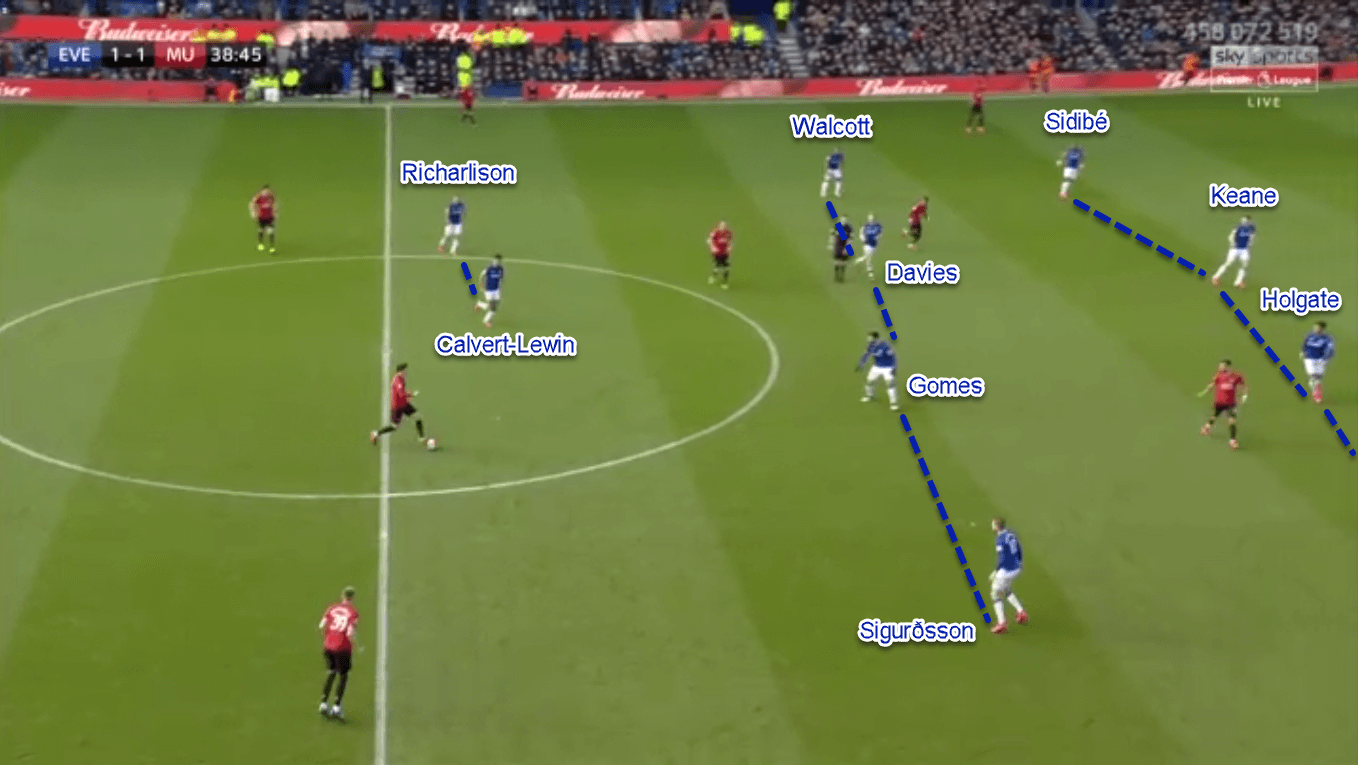
However, Everton reacted to this brilliantly. Defensively, Ancelotti set his team up in a mid-block 4–4–2. The shape was very compact vertically and horizontally. By vertically, it means that Everton didn’t allow United to play in between the lines. Not only that, Ancelotti asked his players to close the channels between them. Such a tactic allowed them to be very tight horizontally.
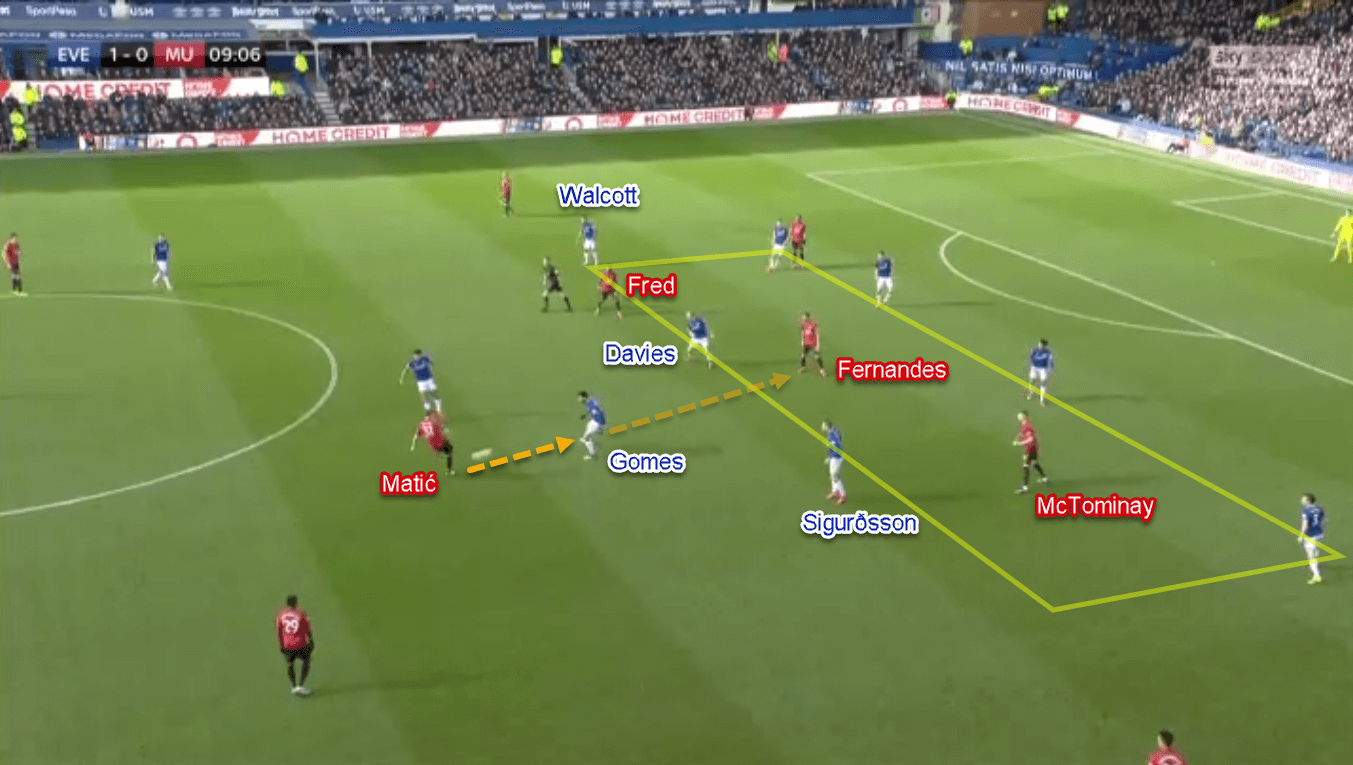
Despite everything, the compactness of Everton’s defensive block had a natural issue. It allowed huge space in the flanks for United to utilise. However, United very rarely capitalised on the advantage. It’s either because their build-ups were too slow or there were no specific tactical from Solskjær to exploit that.
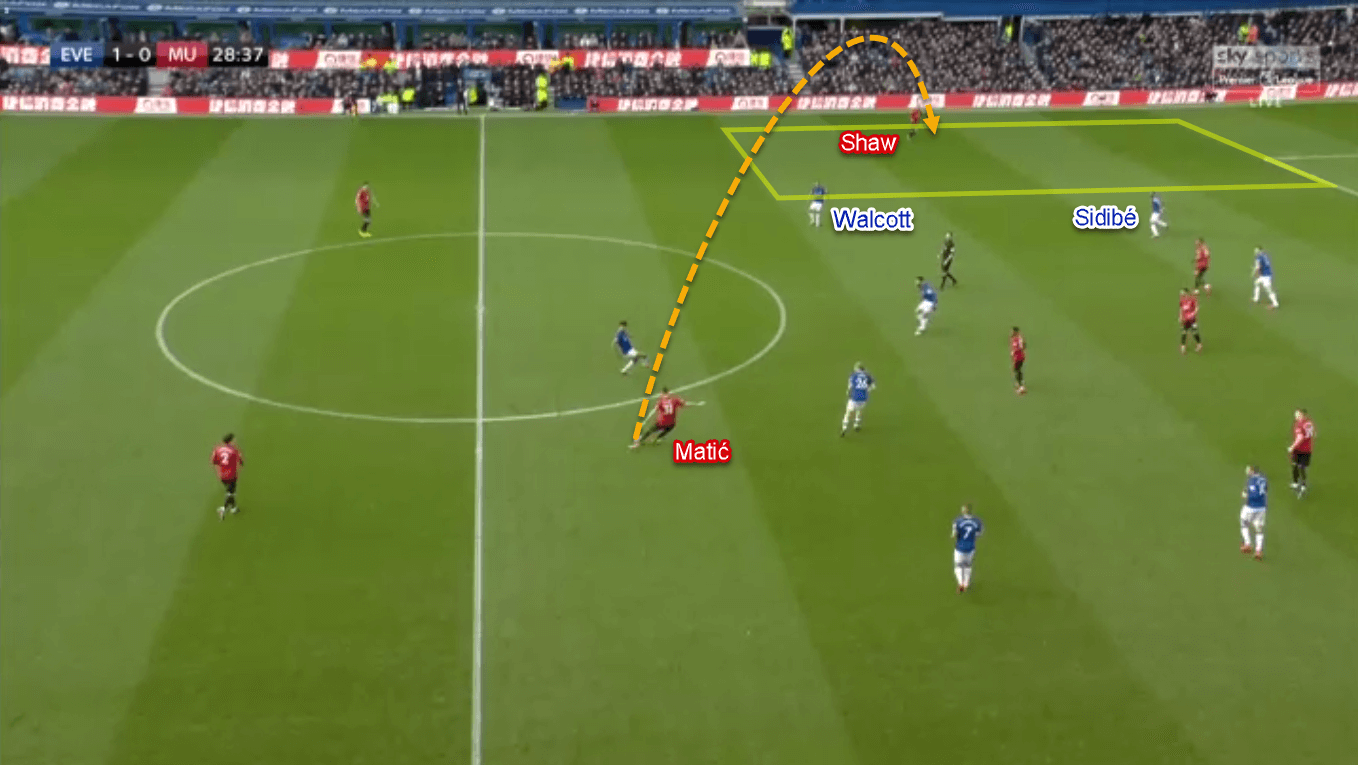
United moved to the flank
In this part of the analysis, we are going to take a look at United’s alternate attacking tactics. Realising the central lanes were closed, United opted to build their attacks through the flanks. In their attacks, the visitors would tend to flood the flank with three players. By overloading the area, United were looking to free one player before sending the ball into the box. The men in red’s wide-area structure were as follow.
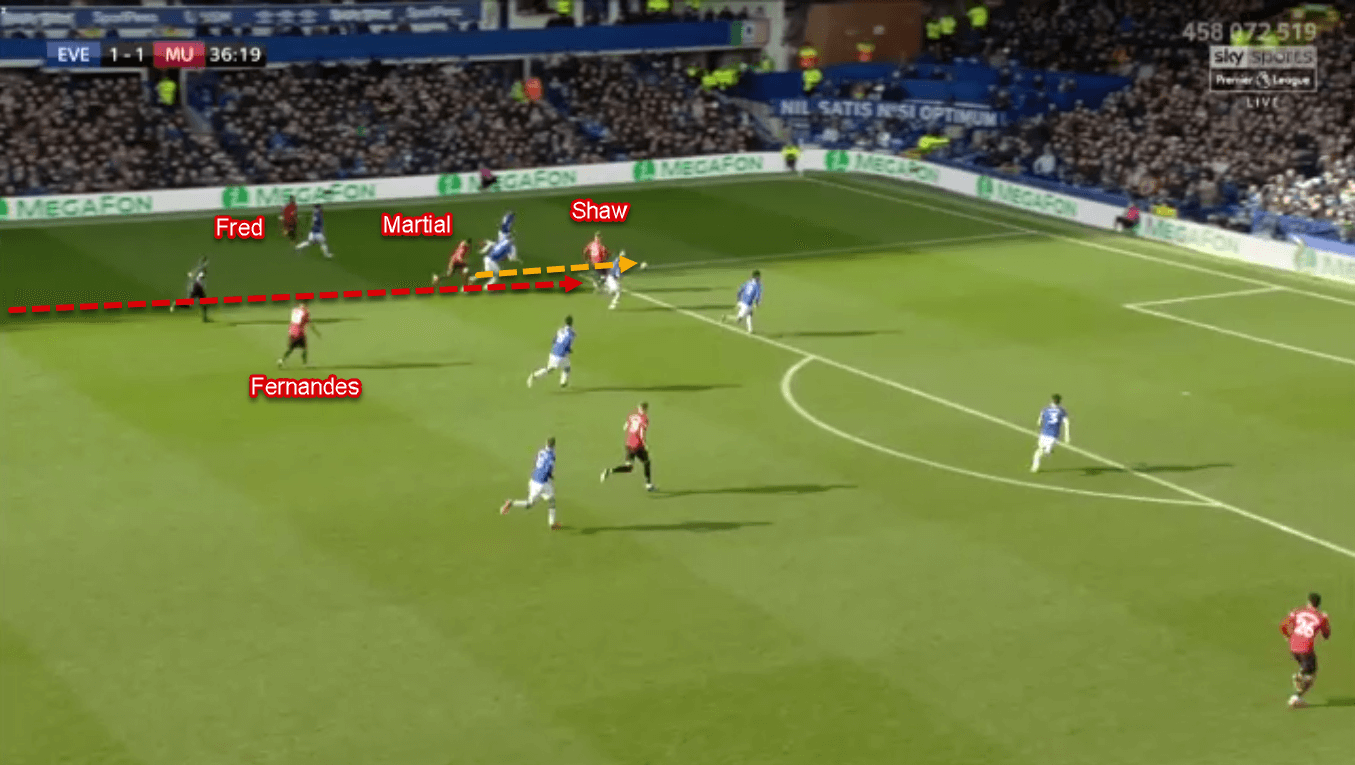
Mainly, Solskjær asked his full-backs to provide the width. Not only that, but the full-backs were also instructed to make overlapping runs beyond their teammates. The objective was to free them in behind the defensive line before making a cross. To help the full-back, United instructed their ball-side midfielder as well as the nearby forward to drift wide. By drifting wide, they could help to make an overload in the flank area.
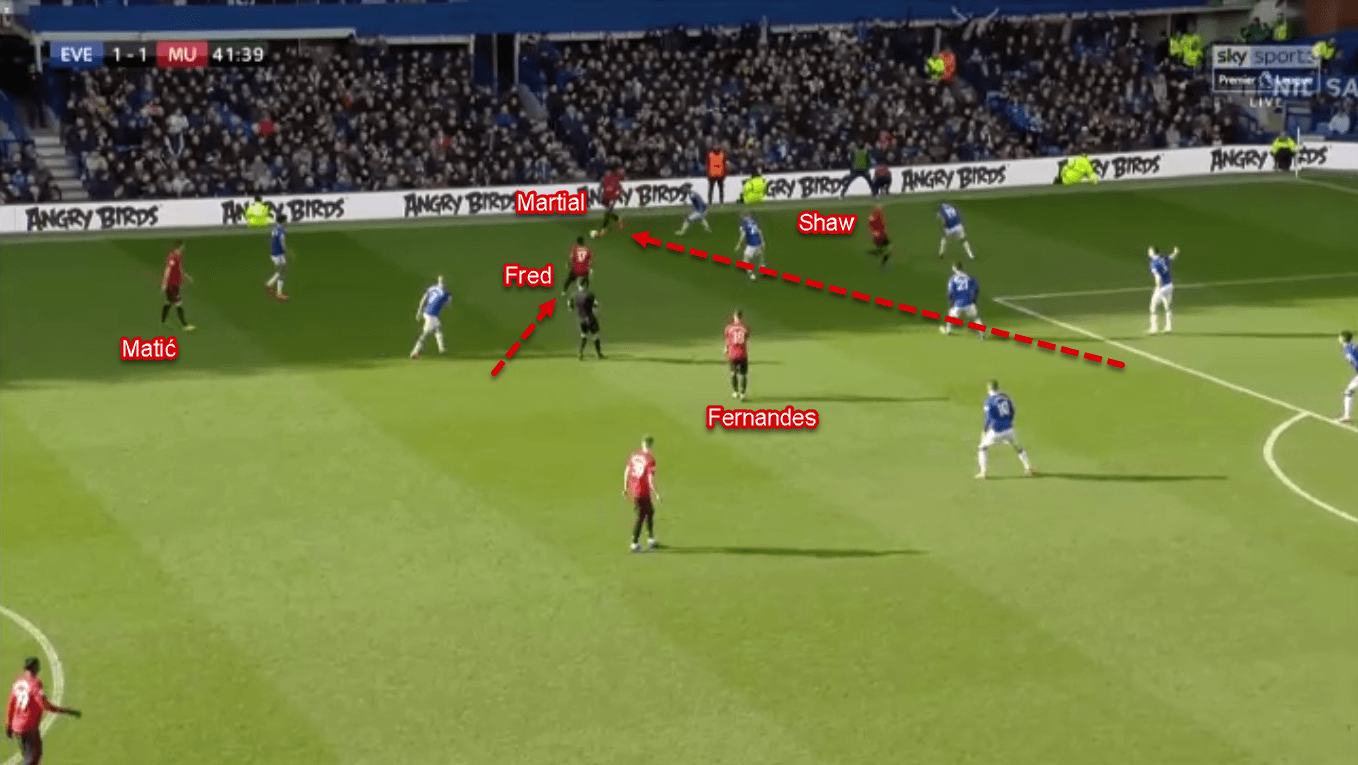
In the central area, Fernandes and Matić provided support. The former was used if United could continue their attack centrally. Meanwhile, Matić gave support if the visitors needed an entrepot to recycle their attack.
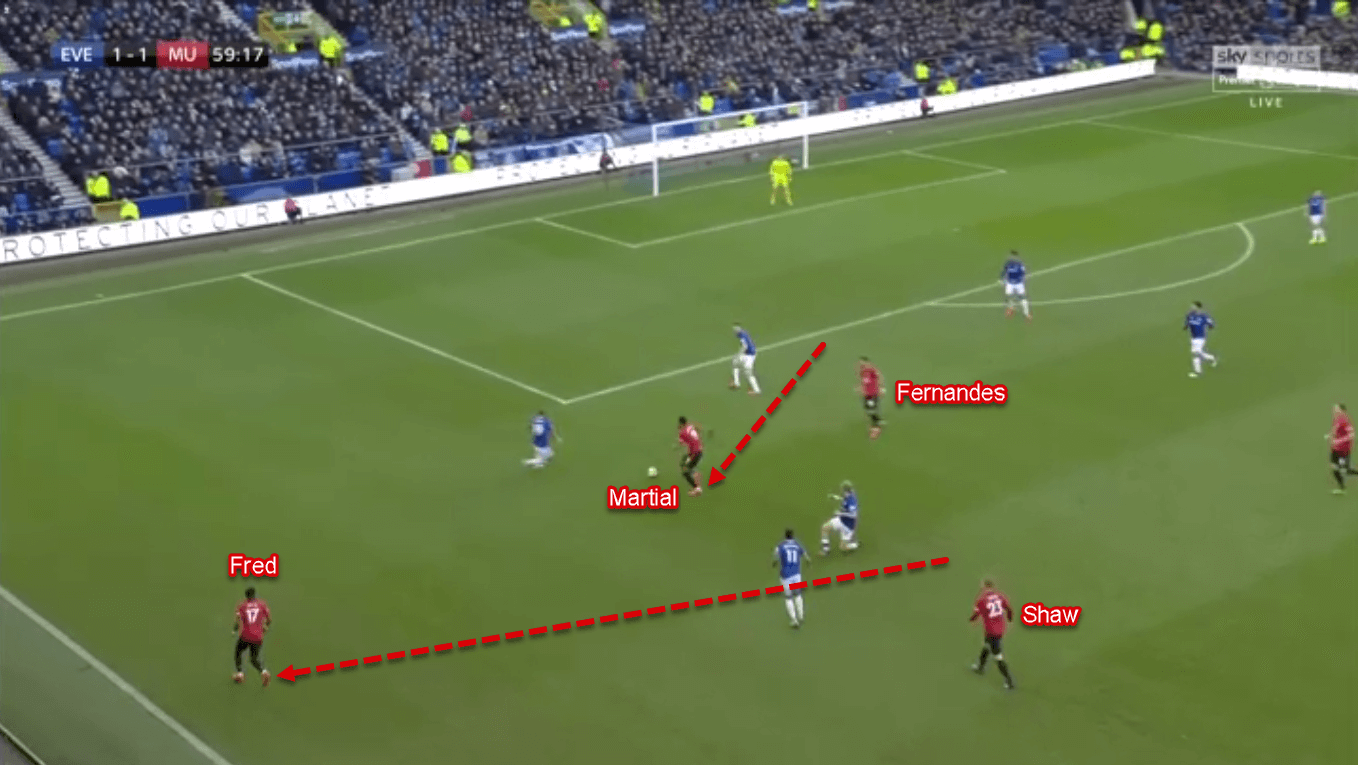
Everton’s defensive tactics (part two)
The home side responded to this in two ways. First, they instructed the ball-side full-back to step-up and press United’s only flank player. In the process, the defender would leave his backline and press the opponent rather aggressively. This would limit his opponent the time and space to continue the attack.
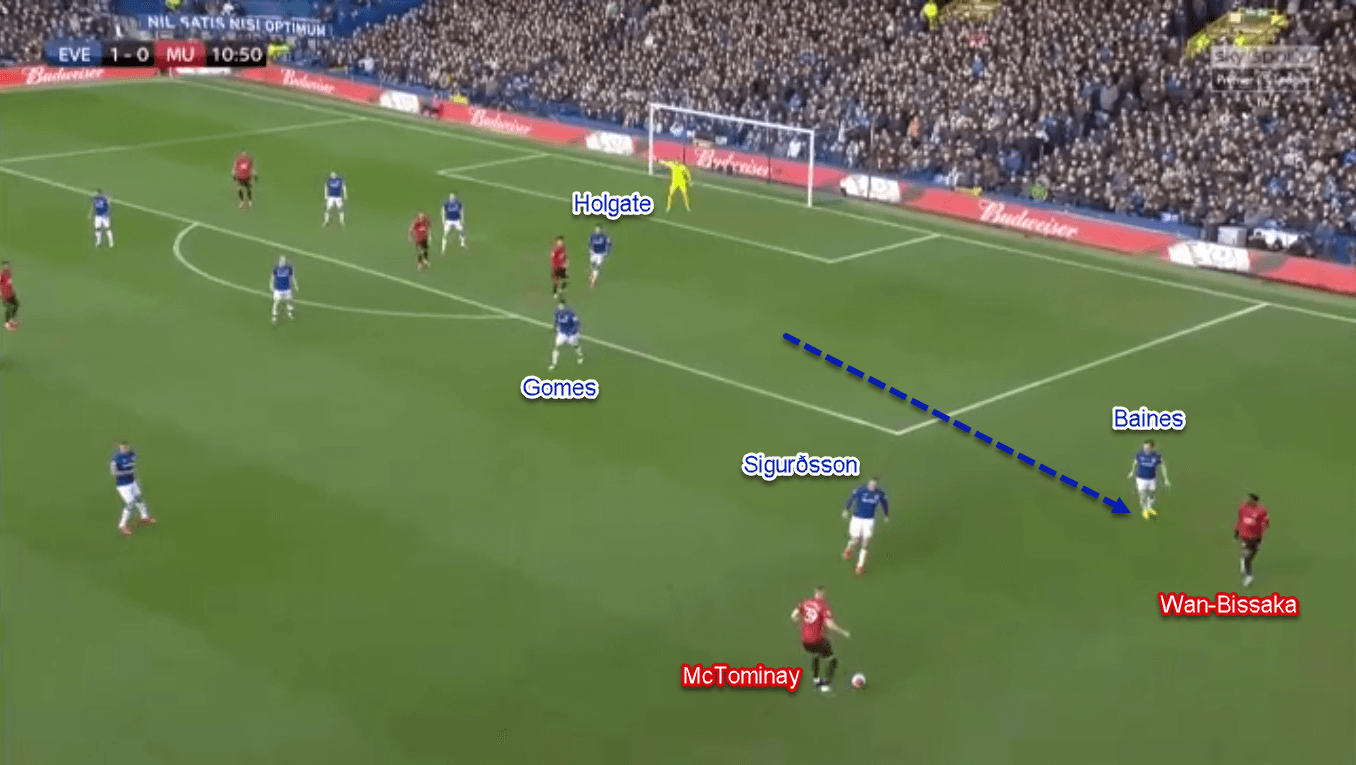
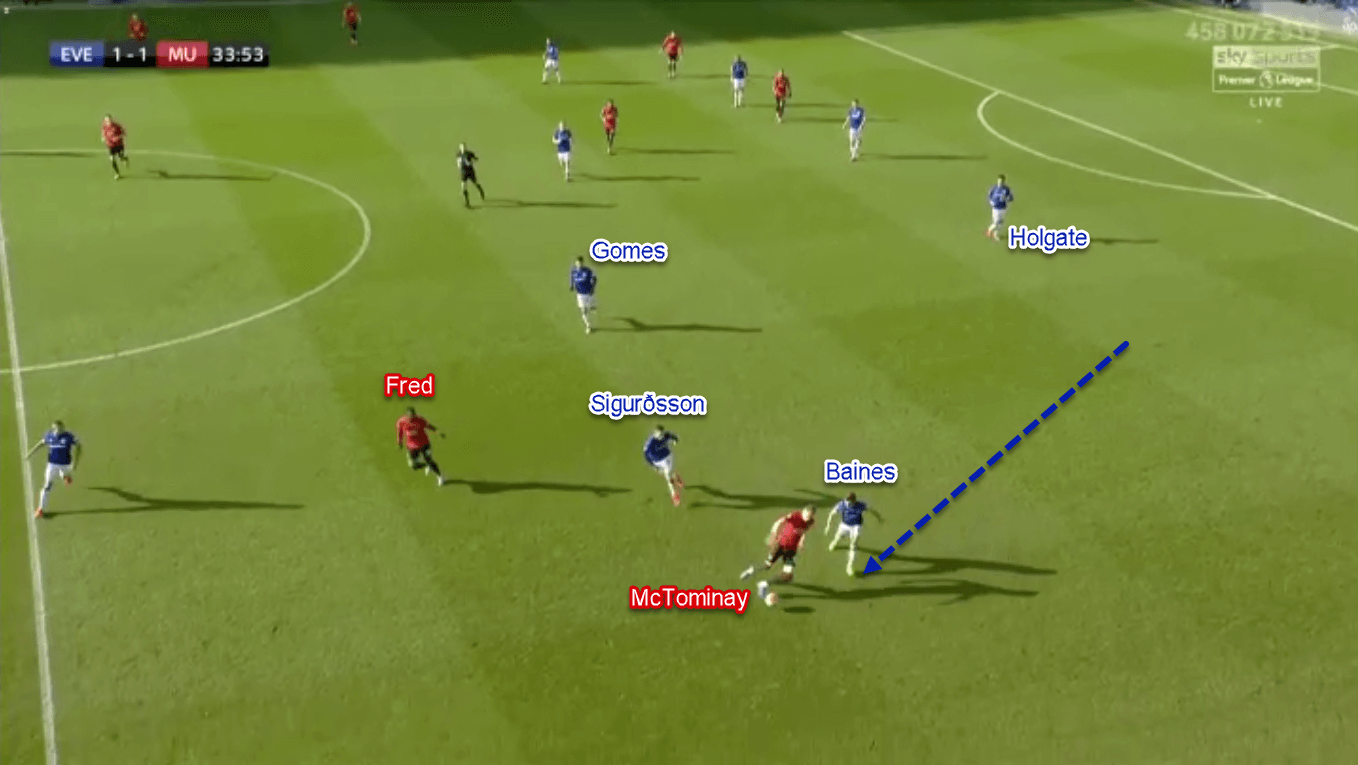
Second, Ancelotti asked his ball-side winger and midfielder to join the press. Not only that, sometimes either the nearby centre-back or forward would also come to help. By doing that, Everton would have up to four players in their ball-side press. This would effectively nullify United’s overload attempt and forced Solskjær’s men to restart their attack.
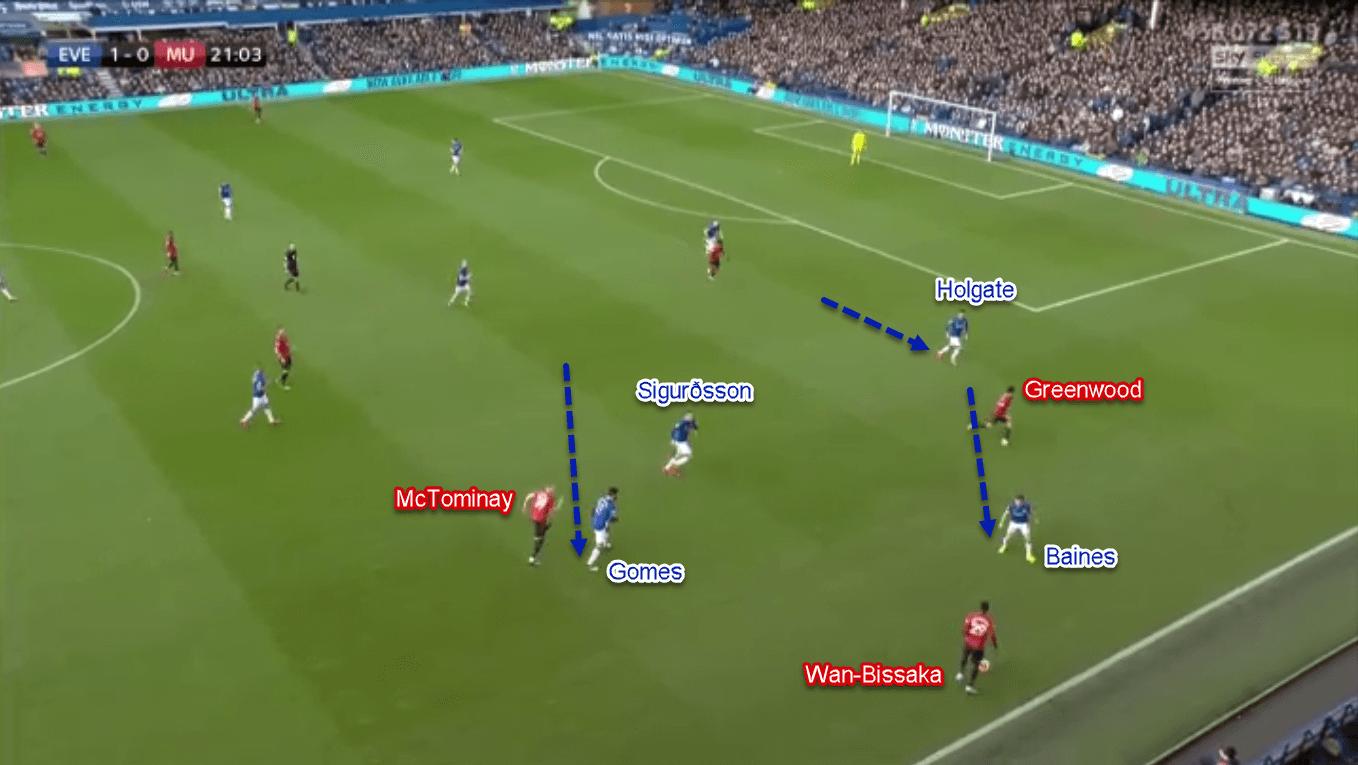
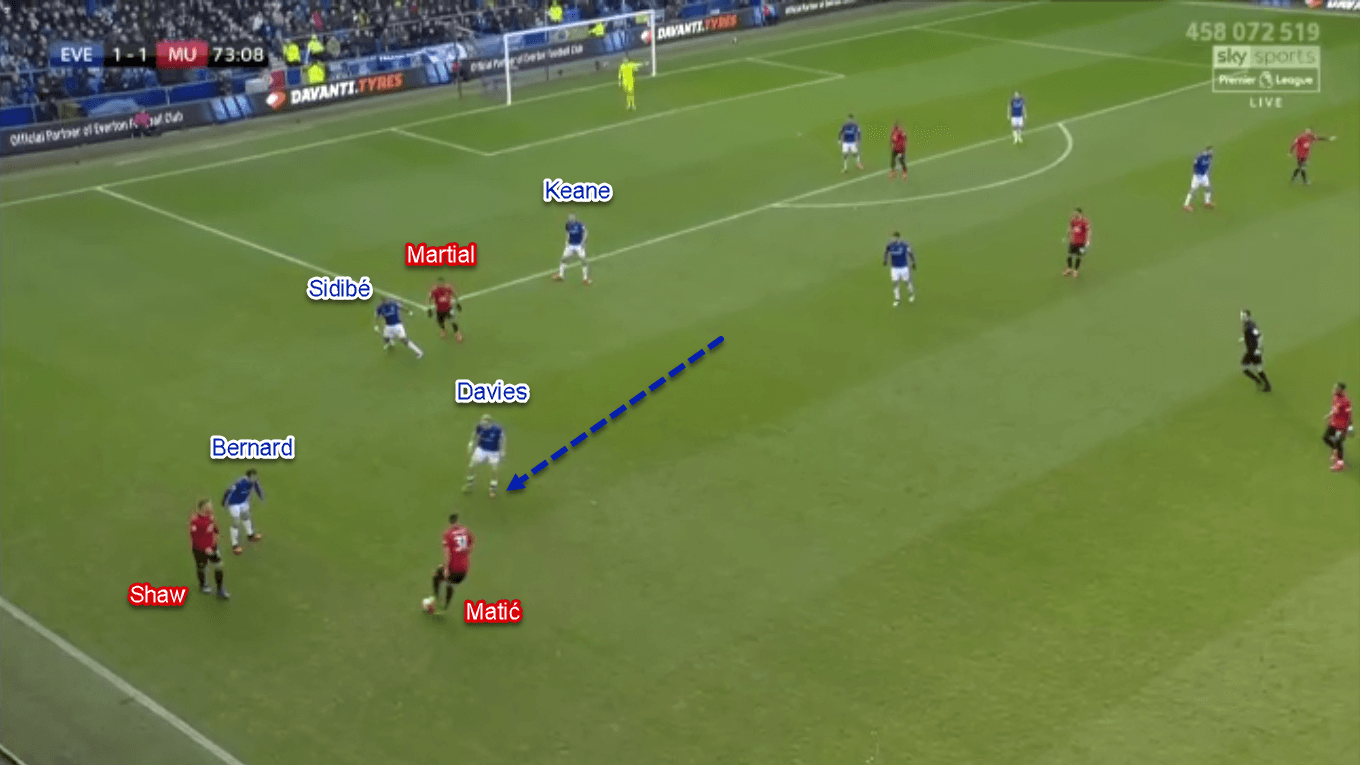
United’s own aggressive defending
Needing a goal, United deployed a high press to limit Everton’s time on possession. In the high press, Solskjær set his team up in 4–3–1–2. The set-up was as follows.
Martial and Greenwood were tasked to stay in the edge of the box. They were positioned there to immediately press Everton’s centre-backs if Pickford played the ball shortly. Behind them, Fernandes stood in the central lane. The Portuguese were positioned in parallel with Everton’s defensive midfielders; exactly in between them. The objective behind this was to prevent Davies or Gomes to be accessed rather easily.
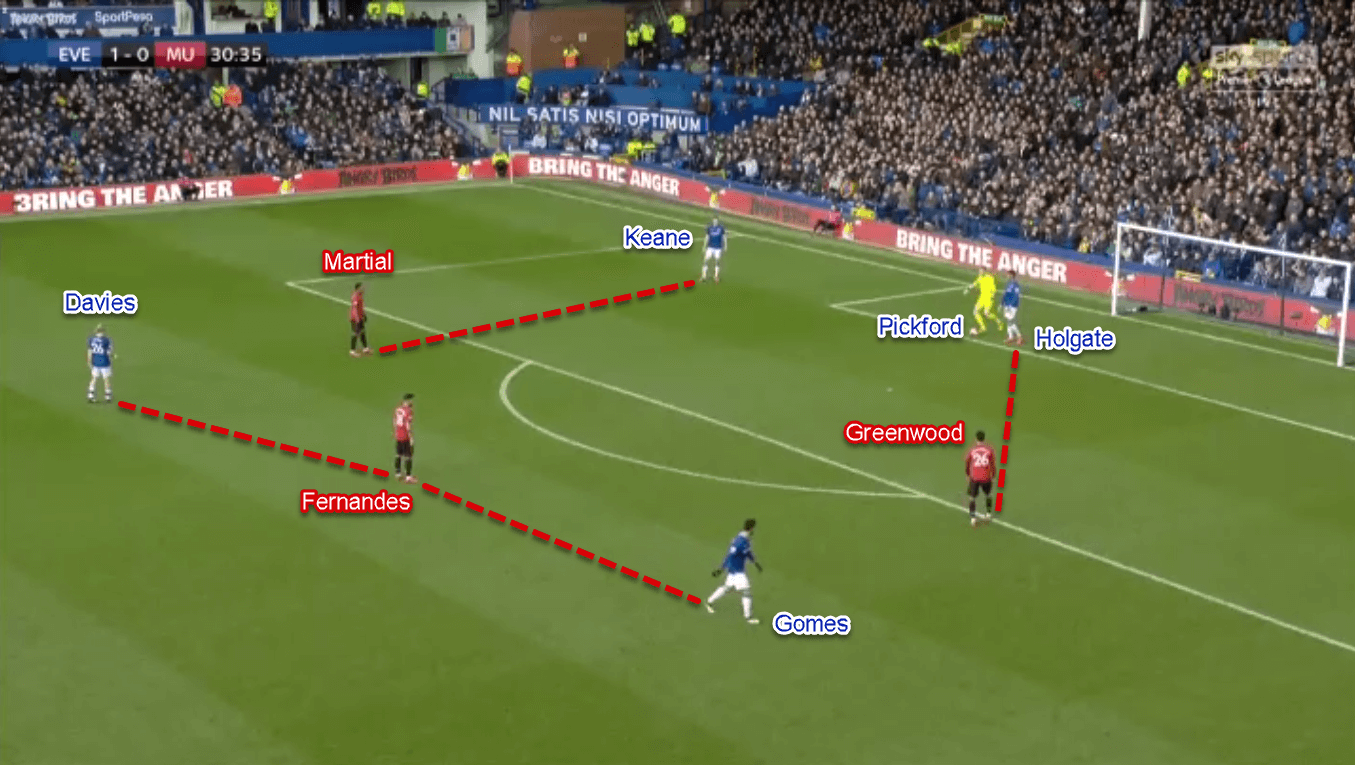
Behind them, McTominay and Fred were initially positioned in the half-space. However, the midfielders were instructed to press if the ball went to one of Everton’s full-back. In the process, they would aggressively step up from their position to engage with the full-backs. By pressing the on-ball opponent, United could limit his time on the ball, as well as reducing his comfort in possession.
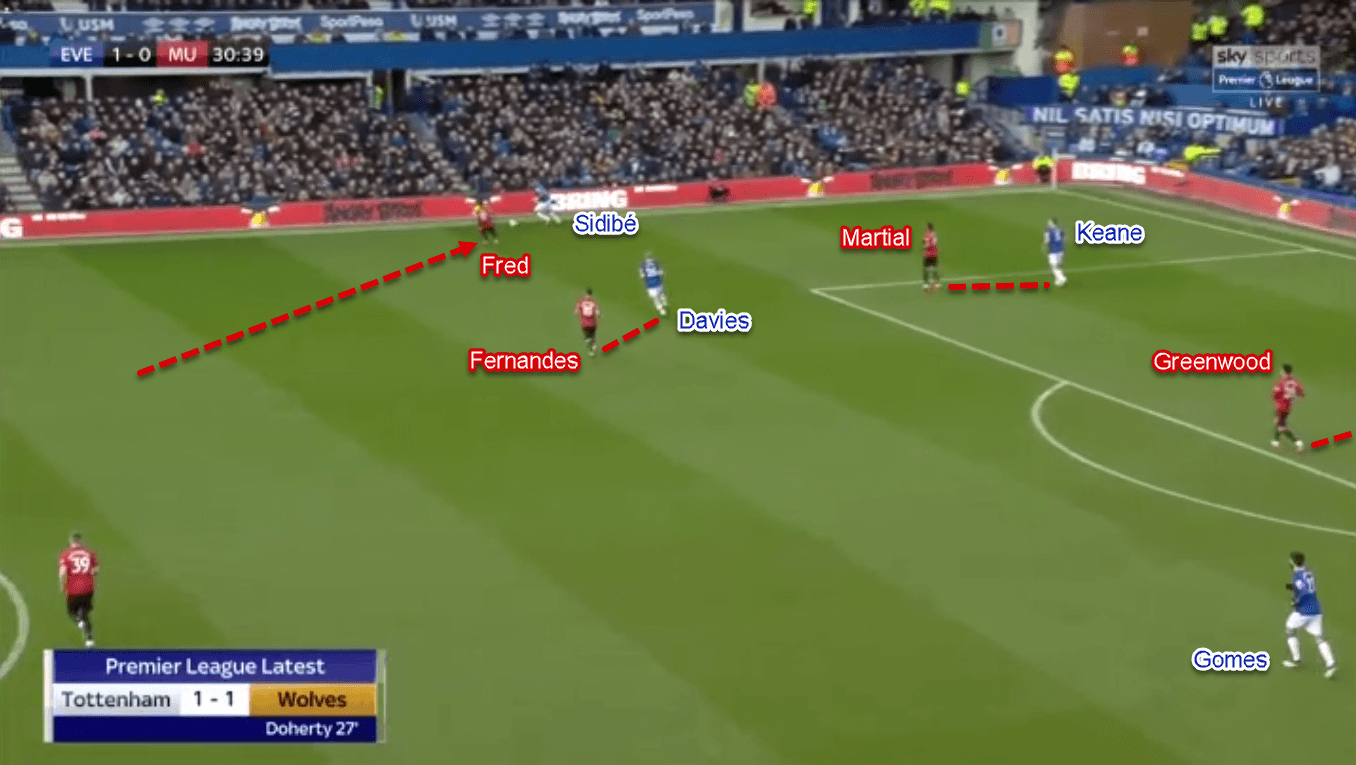
Behind McTominay and Fred, there was Matić. The Serbian was mainly instructed to win the ball back if it went central. Not only that, but Matić was also able to help in aerial duels if Pickford opted to make a long pass. Such calculated defensive tactics were the main reason behind Fernandes’ goal.
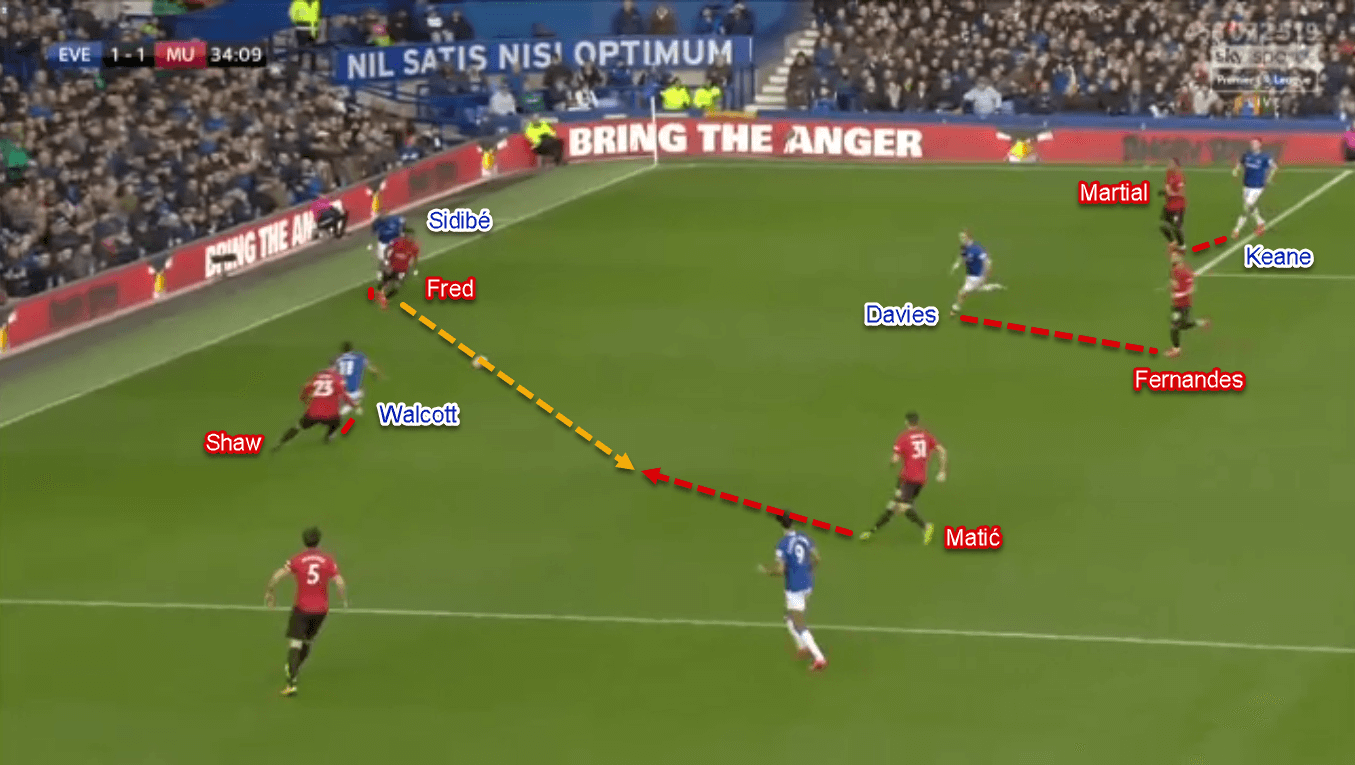
Everton went direct
After the goal, Everton opted to be more direct in their attacks. The statistics showed Pickford made 15 long passes, with 11 (73%) of them were accurate. Those long balls were directed to the forwards; mainly to the 187-centimetres Calvert-Lewin. Looking at the stats, the Englishman made 11 aerial duels, and Richarlison made seven.
In their direct approach, Everton tucked their wingers inside. The objective behind this was to provide Calvert-Lewin with multiple lay-off choices. From Richarlison, Theo Walcott, and Gylfi Sigurðsson, all came nearby the striker to offer themselves as passing options. Not only that, sometimes Davies and Gomes would also come forward to help their attacking comrades to win the second balls.
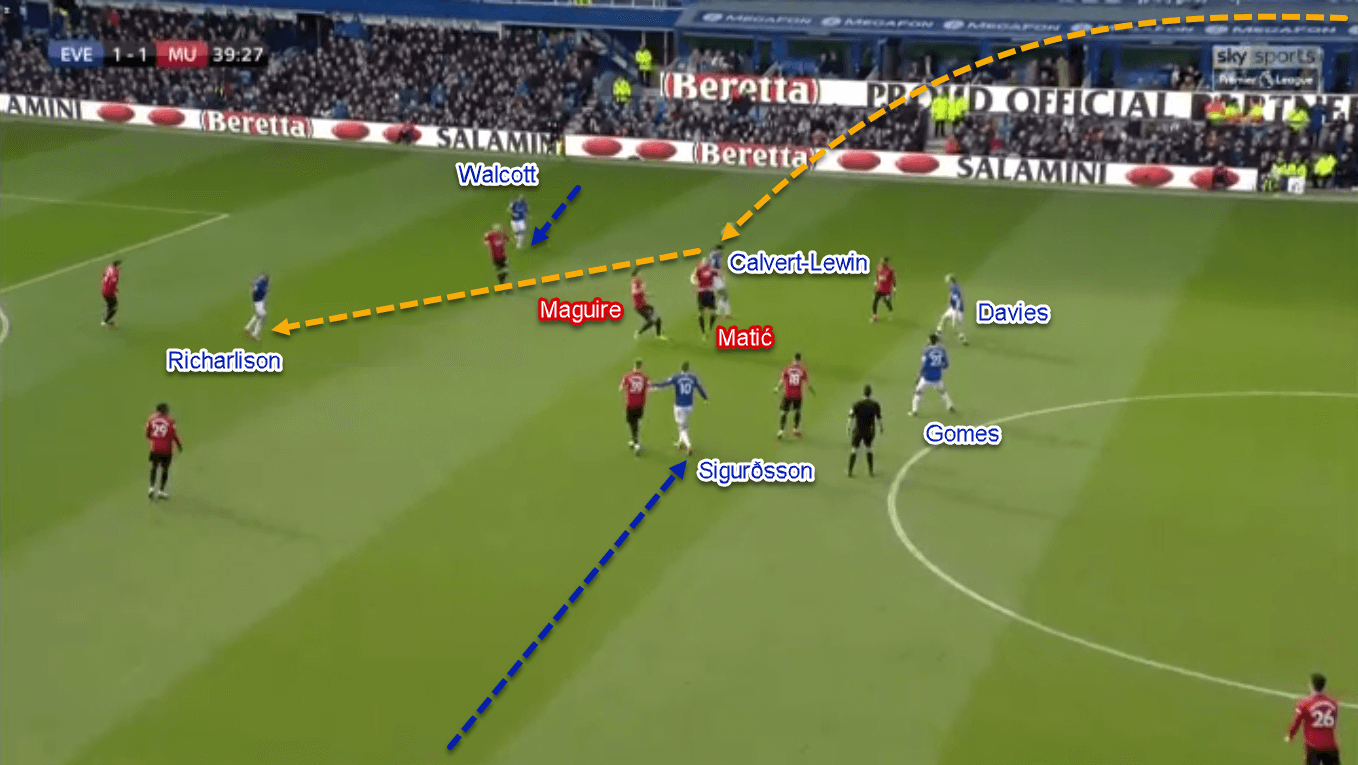
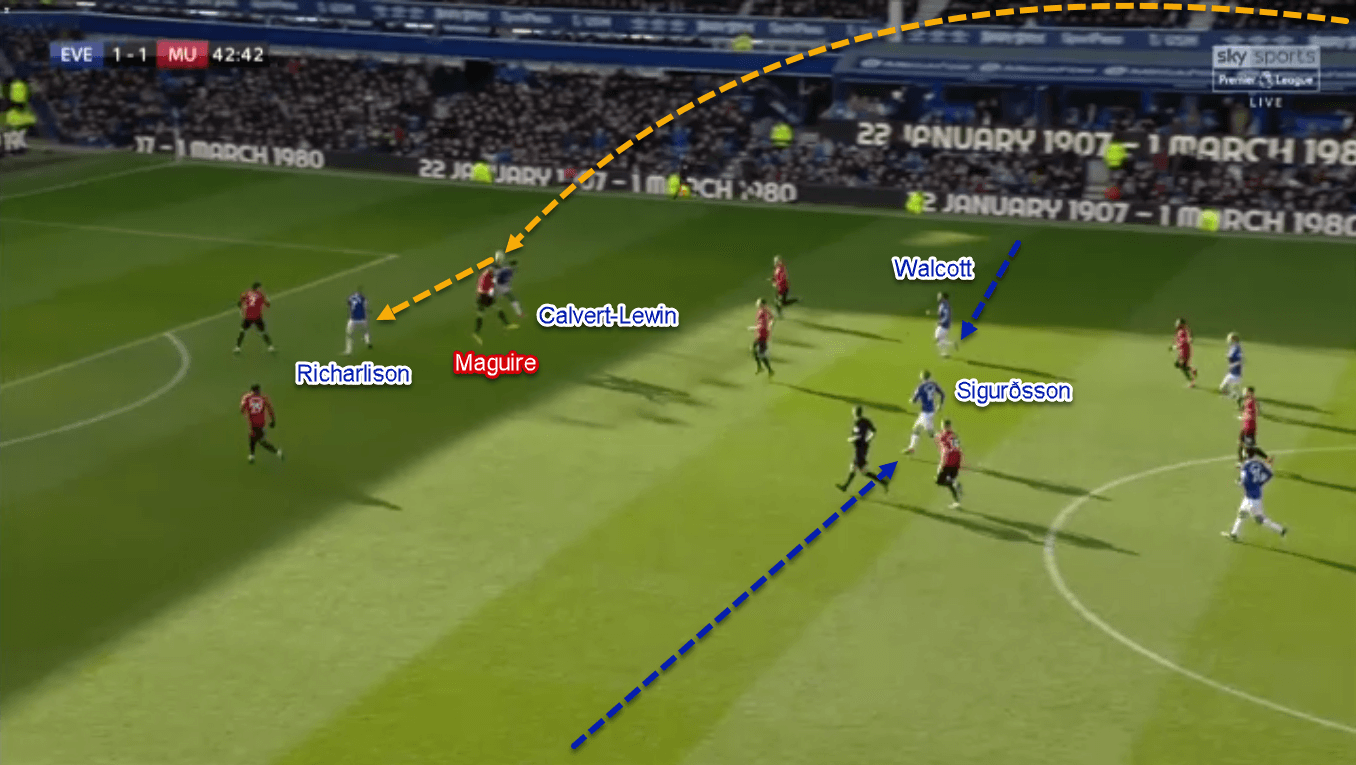
Everton tried to hurt United in possession
When United didn’t press Everton high, the home side were given time to build their attacks comfortably. In the process, they kept their narrow-positioned attackers; thus allowing the full-backs providing the width. By being close to one another, Everton’s forwards could make combinations easily. Not only that, but they would also have multiple crossing options inside the box if needed.
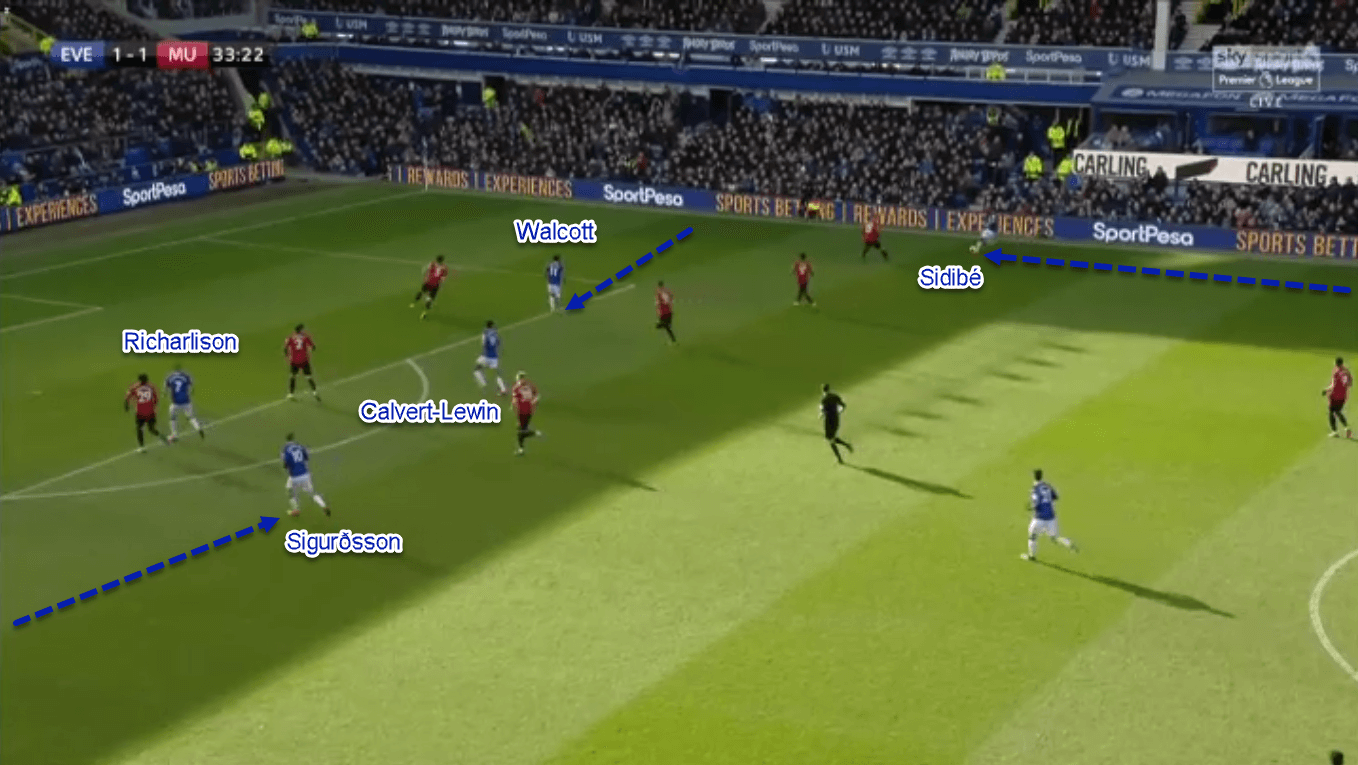
The Toffees would try to exploit United’s midfield issue whenever they had the ball. In their 4–4–2 diamond, United only had two players to protect the flanks at all times; that being their full-backs. However, Everton’s narrow-positioned attackers forced United’s full-backs to stay in their backline. Then, it would only leave the midfielders to protect the flank.
Everton exploited this issue by utilising their full-backs. Whenever they got the ball, Everton on-ball full-back would try to cross the ball. Such a threat must be contained because Ancelotti’s men had up to four bodies inside the box. Then came United’s nearest midfielder to press. When he came to press, he would leave his midfield line; thus allowing an exploitable space between him and Matić.
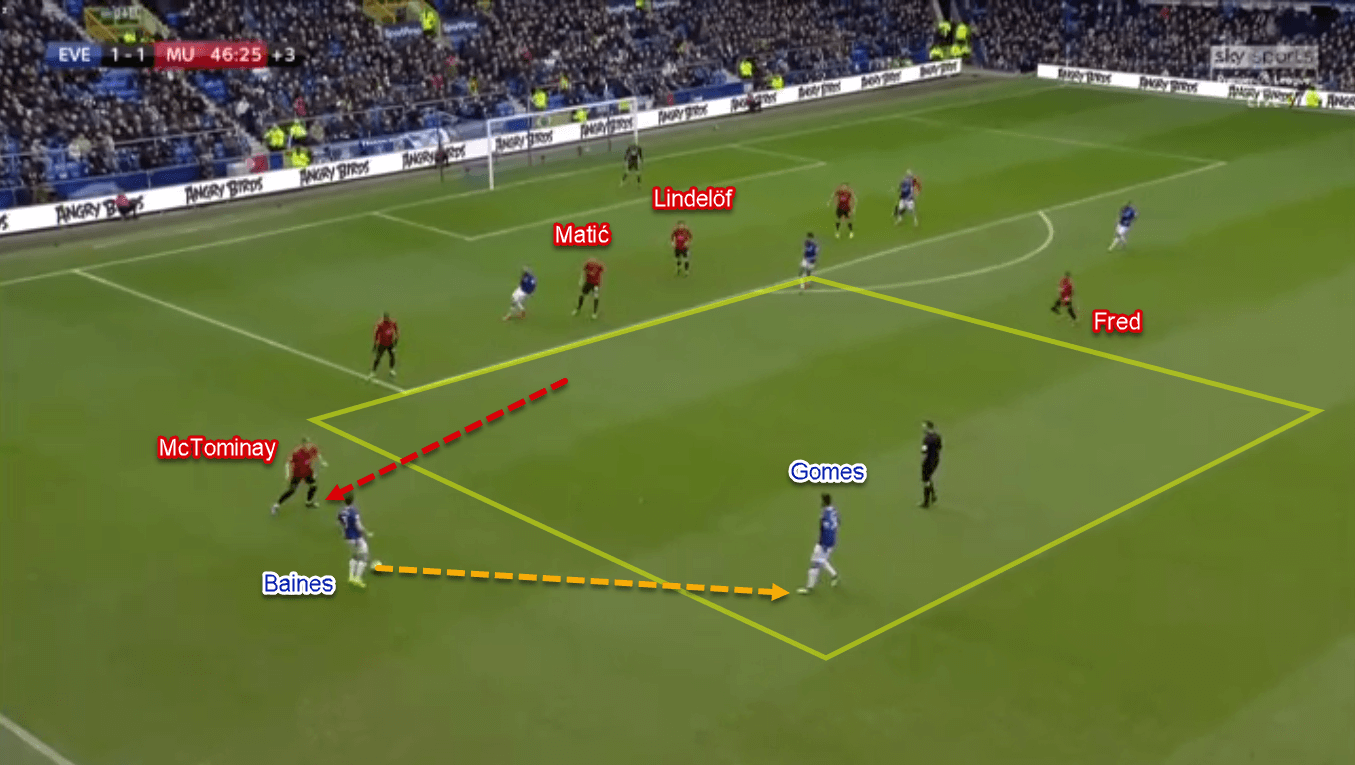
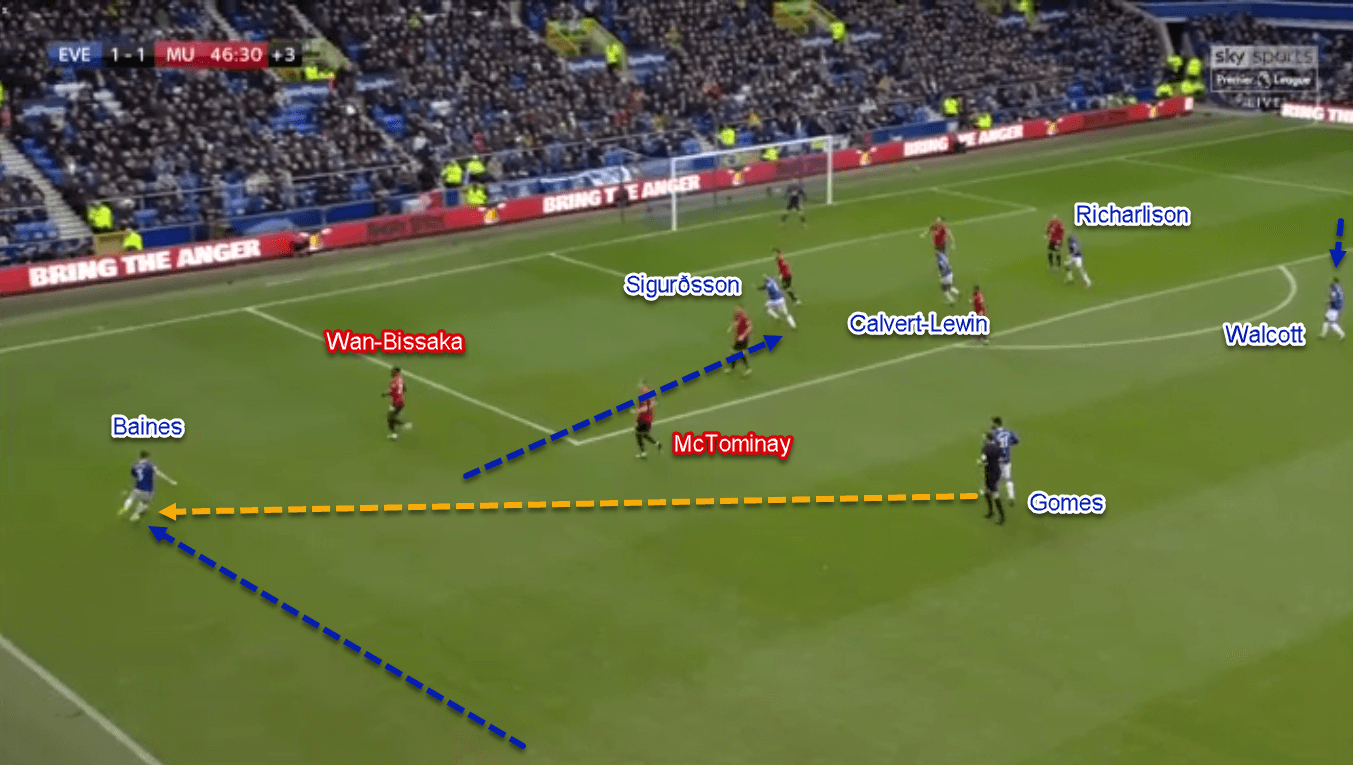
In that area, usually, Everton put one of their midfielders to help the full-back. With two players against United’s one, the Toffees overloaded the area rather freely. Either combining with attackers inside or returning the ball to the flank for a cross, Everton had multiple options to break United’s defence. Looking at the stats, Séamus Coleman, Baines and Sidibé combined to make ten crosses.
Second-half adjustments
There were little tactical changes made in the second half. From United’s perspective, Solskjær adjusted his defensive scheme a little bit. In the section above, it was mentioned that United had a defensive issue as their midfield line was often stretched.
In the second half, Solskjær made a change to his defensive set-up. Instead of using the ball-side midfielder to press Everton’s marauding opponent, United used their full-back to do the task. The ball-side full-back would step up from his backline to press Sidibé or Baines in the flank. Such setup was a bit similar to the one Everton deployed.
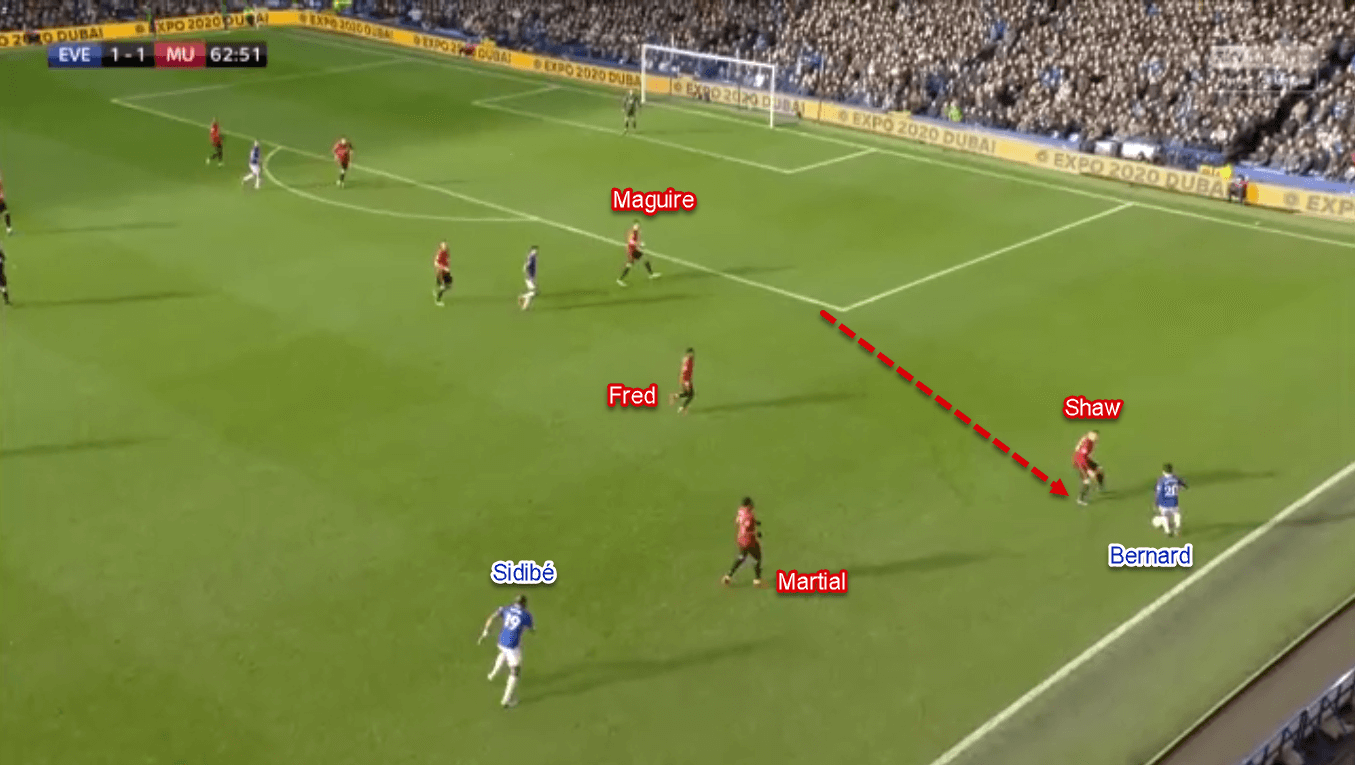
To protect the backline, United sent Matić deeper. By having the Serbian alongside Victor Lindelöf and Harry Maguire, United had enough capability to win aerial duels inside the box. It proved effective as shown by the stats.
Per the statistics, Maguire won six (75%) of his aerial duels. Matić added with three (50%) and Lindelöf with two (50%) successful headers. In total, Everton made 15 crosses with only three (20%) of them went into a man in blue; credit to United’s big men.
Conclusion
We can’t deny the fact that amateurish goalkeeping display from both De Gea and Pickford were the reason behind the goals. However, we must not overlook their heroic performances to redeem their mistakes. Late in the game, Pickford saved an 0.81 xG-worthy close-range attempt from Ighalo. Just two minutes after, De Gea made a point-blank save from Sigurðsson’s 0.45 xG-rated shot. For a fact, those attempts were both club’s best in this game.
Tactic-wise, it was a very interesting encounter between Ancelotti and Solskjær. Credit must go to both managers as they showed superb tactical creativity in this game. With ten matches to go in the Premier League, both Ancelotti and Solskjær need to keep up what they have done recently. It will be very interesting to see how they cope with the late-season heat.





Comments